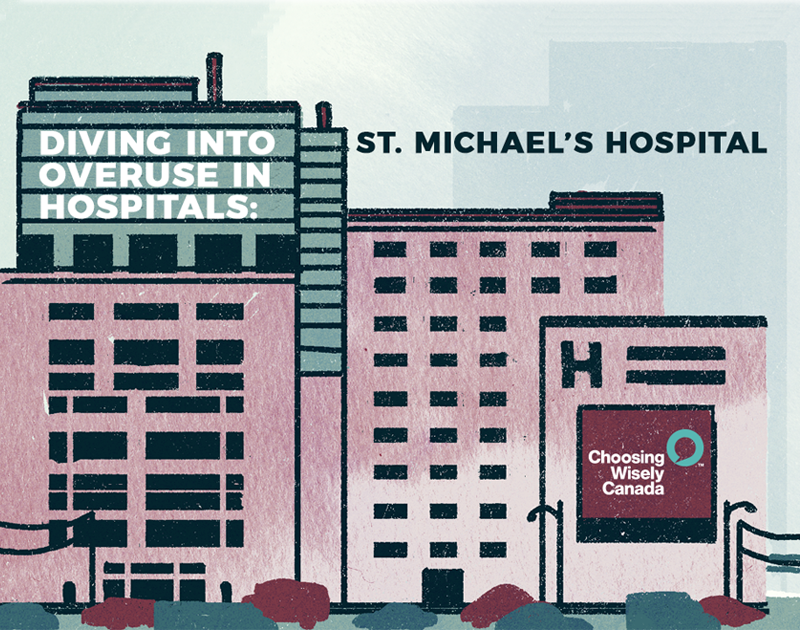Choosing Wisely at St. Michael’s Hospital
Feb 25, 2019 - Profiles
See how St. Michael's Hospital in Toronto, Ontario is diving into overuse and reducing unnecessary tests and treatments.
Choosing Wisely at St. Michael’s Hospital
Feb 25, 2019 - Profiles
See how St. Michael's Hospital in Toronto, Ontario is diving into overuse and reducing unnecessary tests and treatments.

St. Michael’s Hospital (SMH) is an academically affiliated hospital in downtown Toronto known for innovative patient care, education and research with a focus on urban health. SMH has an institutional commitment to quality improvement, including curtailing over-utilization, which led the hospital to designate Dr. Lisa Hicks the official Choosing Wisely Lead in 2014. Having a formal clinician lead has helped the hospital prioritize the campaign and keep project momentum going over the last 4 years.
Reducing ‘routine’ coagulation testing in the emergency department (ED) was one of the hospital’s initial Choosing Wisely undertakings. Although used anecdotally to screen for hemostatic defects in unselected patients, PT and aPTT testing were never designed nor validated to be used as such. Dr. Michelle Sholzberg, Director of the Coagulation Laboratory, saw an opportunity in 2015 for the ED, Lab Medicine, and Hematology to collaborate, ensuring evidence-based best practices were being followed. The majority of lab testing in the ED is triggered by medical directives wherein ED nurses order from labs panels for common presentations. All SMH lab panels were reviewed and it was decided that PT/aPTT would be removed from the ED as they were uninformative as a routine test. After removal, there was a more than 60% reduction in both tests collectively. Measurement focused on the mean testing rate per month of targeted tests and the reagent costs. Balance metrics including ED length of stay and transfusion rates showed no change. Add-on test rates were assessed pre-and post-panel changes for a subset of tests (PT/aPTT) and were stable.
Dr. Hicks refers to strategies like this as ‘low hanging fruit’. Her criteria for identifying low hanging fruit at any institution are simple:
- There needs to be evidence that the care is unnecessary (i.e. that the harms of over-testing outweigh the benefits);
- That the type of overutilization is common (what are the volumes of use, are your efforts being optimized in changing this process above others);
- That fixing the problem is doable (consider what behaviors and conditions are driving the overuse. Deleting automatic orders for tests and debundeling is much easier than reducing imaging for mechanical low back pain)
Revisions to ED lab panels are a relatively simple change strategy that can result in dramatic reductions in test volumes without adversely impacting patient care.
For more on SMH’s REDUCED project read their BMJ Quality publication here: https://bmjopenquality.bmj.com/content/bmjqir/6/1/u221651.w8161.full.pdf
SMH has implemented over 10 Choosing Wisely Canada recommendations. Impressively, question 1,3, and 5 found in Level 1 of the starter kit have all been led or executed by SMH. SMH, and in particular Drs. Lisa Hicks and Michelle Sholzberg, are also the authors of the ‘Pause the Draws’ toolkit found in Level 2 of the starter kit. To read more about SMH and how they’re diving into overuse visit their website: http://www.stmichaelshospital.com/quality/choosing-wisely.php.
